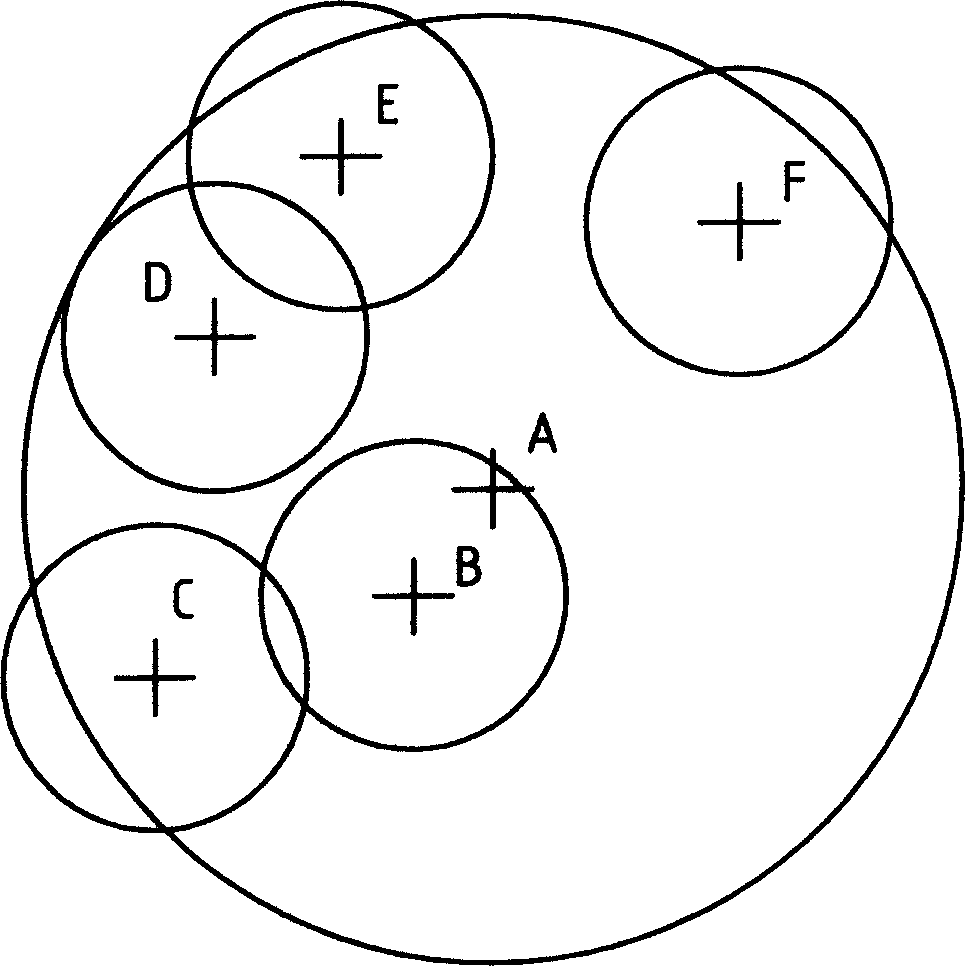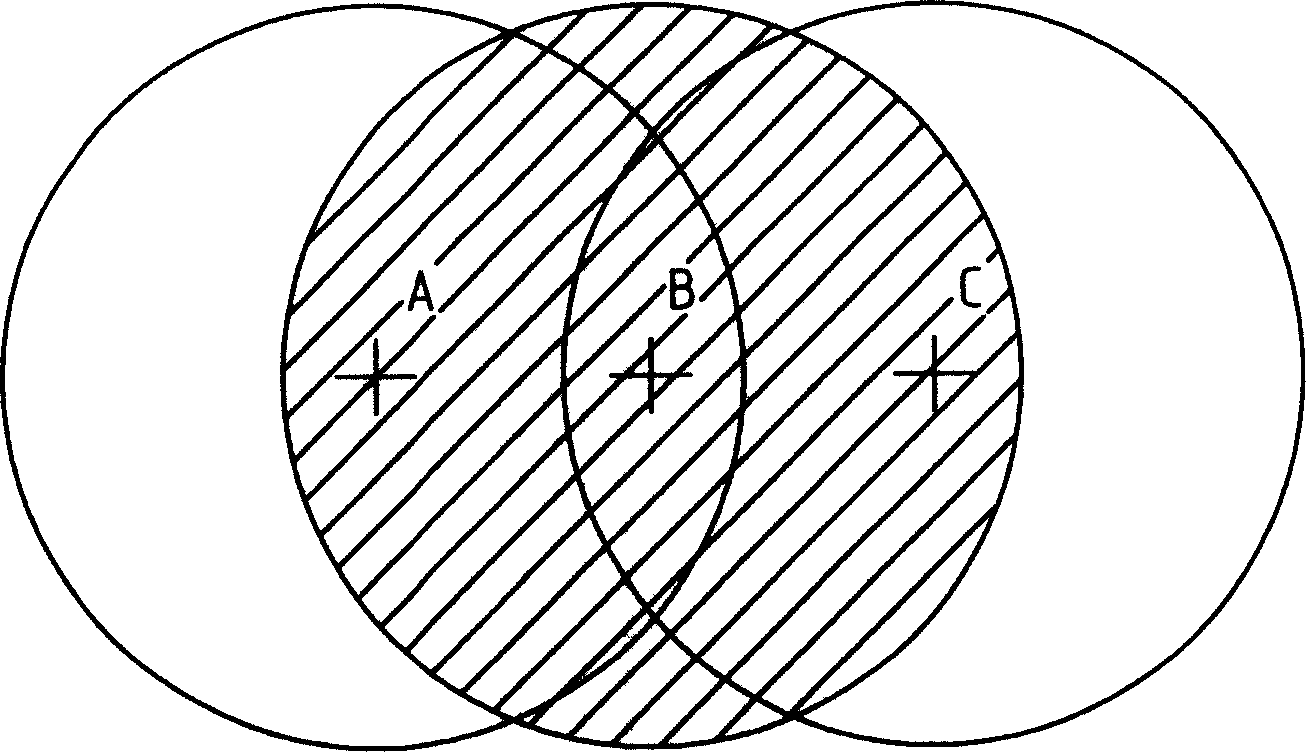Method of base station antenna array polarization for wireless system
A base station antenna and wireless system technology, applied in polarization/direction diversity, diversity/multi-antenna systems, antennas, etc., can solve problems such as fewer frequency points, high distribution density of base station antennas, and interference from sending and receiving signals
- Summary
- Abstract
- Description
- Claims
- Application Information
AI Technical Summary
Problems solved by technology
Method used
Image
Examples
Embodiment 1
[0024] Reference attached image 3 ,against figure 1 In this arrangement, the antenna that transmits signals from base station B can be changed to an antenna that is polarized differently from the signals received by other base stations. For example, the antenna of base station B can be set to vertical polarization, and the antenna for other base stations to receive signals can be set to vertical polarization. It is horizontal polarization; the antenna of base station B can also be set to horizontal polarization, and the antennas of other base stations receiving signals are set to vertical polarization; in the same way, the antenna of base station A can be set to vertical polarization, B The antenna of the base station receiving signals is set to horizontal polarization; it is also possible to set the antenna of base station A to transmit signals to horizontal polarization, and the antenna of base station B to receive signals to vertical polarization. In this way, the signals rec...
Embodiment 2
[0026] Reference attached Figure 4 , For attached figure 2 You can change the antenna of base station A to transmit and receive signals to antennas with different polarizations than other base stations to receive and transmit signals. For example, you can set base station A to transmit and receive signals as vertically polarized antennas, and other base stations receive And the transmit signal is set as a horizontally polarized antenna; you can also set the A base station transmit and receive signal as a horizontally polarized antenna, and other base stations receive and transmit signals as a vertically polarized antenna. You can also set A base station transmission to a vertical polarization antenna and receive to a horizontal polarization antenna, other base stations to receive a horizontal polarization antenna, and transmit to a vertical polarization antenna; you can also set A base station transmission to a horizontal polarization Set the vertical polarization antenna and se...
Embodiment 3
[0028] Add base station layout method. This embodiment is a method of adding new base stations on the basis of the original rational layout, such as Figure 5 As shown, A, B, C, D, F, G, H, I, J, K, L, M, N, O are the existing arrangement of the same frequency or adjacent frequency transmission and the other party receiving the same polarization Base station antenna, if you want to add a new base station in the interference area of A, you can choose to place the A1 base station in the area between the A, B, F, and G base stations. This is a better arrangement. A1, A base station radio frequency is the same frequency or adjacent frequency base stations, where A base station transmission is set as a vertical polarization antenna, A1 base station reception is set as a horizontal polarization antenna, A base station reception is set as a vertical polarization antenna, and A1 base station transmission set It is a horizontally polarized antenna; you can set A base station transmission ...
PUM
 Login to View More
Login to View More Abstract
Description
Claims
Application Information
 Login to View More
Login to View More - R&D
- Intellectual Property
- Life Sciences
- Materials
- Tech Scout
- Unparalleled Data Quality
- Higher Quality Content
- 60% Fewer Hallucinations
Browse by: Latest US Patents, China's latest patents, Technical Efficacy Thesaurus, Application Domain, Technology Topic, Popular Technical Reports.
© 2025 PatSnap. All rights reserved.Legal|Privacy policy|Modern Slavery Act Transparency Statement|Sitemap|About US| Contact US: help@patsnap.com



